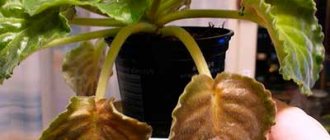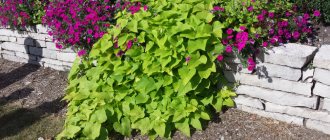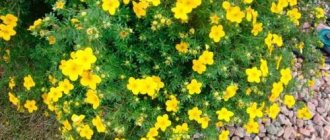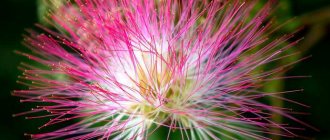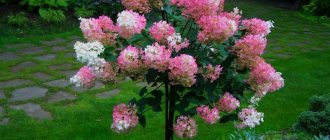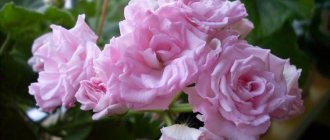- home
- Plant catalog
- Beautifully flowering
Reading time: 13 minutes
11368
Bright and large gloxinia bells decorate the windows of apartments and country houses. Many people adore this beautiful flower, but no one thinks about where it came from, where it grew in the wild.
More than 200 years ago, in distant Brazil, Peter Gloksin discovered an amazing plant. A doctor and naturalist from Germany, who was on an expedition in South America, saw bells among the rocks. They were colorful - miniature or large, plain or speckled.
The young scientist could not take his eyes off the plant and brought this miracle to Europe; gloxinia began to be planted in greenhouses. Blue, scarlet, pink, dark red flowers appeared in botanical gardens.
At the beginning of the 20th century, gloxinia acquired a new name sinningia , but it never became widespread. This name was given in honor of Wilhelm Sinning.
He began to breed new varieties of plants. Sinningia or Sinningia speciosа , bred through selection, had a fleshy tuber, and in the wild the root resembled a carrot.
- Types of Gloxinia
- Varieties, varieties, photos of terry gloxinia
- Where and how to plant
- Home care
- Diseases and pests
- Features of reproduction and cultivation
general description
Sinningia is a genus of perennial plants from the Gesneriaceae family, originating from South America, according to The Plant List, consists of 70 species. For hybrids with brightly colored large corollas, the generally accepted name is gloxinia, although the botanical nomenclature includes a genus with this name.
What does the plant look like?
This is a herbaceous crop with oblong or oval, velvety, opposite leaves, the size of which varies among species from a few millimeters to 25 cm. The vertical shoots of gloxinia reach a length of 10 cm - 1.5 m, dying off before the hot dry season. Survives during the dormant period due to the fleshy underground tuber.
Indoor flowers are interspecific hybrids. They reach a height of 25 cm or more, there are miniature varieties up to 5 cm. They form a tuber, the diameter of which even in a mature plant does not exceed 10 cm.
The corollas of species and varieties are bell-shaped, with petals fused into a tube. Each peduncle consists of 1-10 buds. Coloration ranges from white to purple through orange and pink, and the throat is often mottled.
Gloxinia varieties have large, bright flowers, often double, with a contrasting border, dots, and flows.
Gloxinia species involved in selection
Almost all varieties come from interspecific hybrids. Only a few propagate by seeds, giving 20% splitting in the first generation. In the second and subsequent periods, the percentage of varietal mismatch increases.
In order for young gloxinia to resemble the mother plant, vegetative propagation is recommended. Essentially, this method is multiple cloning of one copy.
The beautiful Sinningia speciosa was initially crossed with other natural species. It is a plant up to 45 cm high with a short shoot, dark green leaves from 8 to 25 cm long, tubular flowers with a fused purple or lilac corolla. There is a white variety.
Natural species participated in the creation of miniature new varieties:
- Sinningia concinna (Concinna);
- Sinningia conspicua (Conspicua).
Home care
Water the plant, settling the water in advance, preferably so that it is slightly warmer than the air in the room.
During the period of appearance and blossoming of buds, the soil is moistened almost every day, during dormancy - once a week.
Proper planting and care, taking into account the characteristics of gloxinia, ensure long-term flowering of bright bells.
Remember that lack of moisture and its excess, high and low temperatures negatively affect the plant:
- Cold water causes the leaves to become stained.
- If you overwater, they will fall off.
- In a very dry room, gloxinia turns yellow.
- A lack of nutritional components leads to a lack of buds.
The soil is fed every 10 days with special complex fertilizers or bird droppings, which are added to the pot without affecting the shoots. With a lack of microelements, the bells fade and become smaller.
Important! Before the dormant period, the plant sheds its leaves. At this time, watering is stopped, the pot with the plant is transferred to a dark, cool place, the tops are cut off, leaving a couple of centimeters.
In this video, the expert talks about the features of caring for gloxinia:
Classification of Gloxinia
There is no single system for classifying culture. When describing varieties, indicate:
- bush size;
- coloring;
- degree of terry;
- location of the contrasting pattern on the petals (if any).
Gloxinia colors
The corollas of the plant are painted in rich, pure colors - rich or pastel. Gloxinias with contrasting patterns are very popular.
Varieties are divided:
- Plain - the corolla is smoothly colored or with small streaks of the same color. The pharynx is white or lemon-colored, with specks at the entrance or inside the tube.
- Bicolor . Along the edge of the corolla there is a contrasting border - clear or blurred, narrow or occupying most of the flower. Specks are allowed in the tube.
- Calico are called gloxinias, the petals of which are scattered with contrasting peas or to match the main color of the pea. At the entrance to the pharynx they often become smaller and line up in stripes.
- Tigers look like a hybrid of Gloxinia calico and bicolor. There is a border along the edge of the petals, with specks inside.
Whisk type
There are three main types of flowers:
- Simple - with petals fused into one row. Typically, such gloxinias are distinguished by a large corolla diameter, reaching 10 cm in new varieties.
- Terry - rows of petals at least two. There are flat flowers with a visible throat and a stuffed center that remains closed for a long time. The petals can be arranged in even, ordered rows or chaotically, which is why the flowers appear shaggy and the tiers cannot be counted.
- Tydaea are similar to the genus Tydaea from the Gesenriaceae family only in name and flower shape. It resembles both a shoe and a bell. Attached to the long tube is a five-petalled corolla, convex on one side.
Among the new varieties, terry tidea appeared, which are still considered unusual and rare.
Bush size
It is difficult to classify the Gloxinia rosette. The span of leaves is largely determined by lighting:
- insufficient - the plates stretch upward;
- intense, long-lasting – a flat rosette is formed.
Naturally, in different conditions the diameter of a bush of the same variety is very different, depending on the following factors:
- soil composition;
- fertilizing;
- plant health;
- Does the pot have drainage?
Some gardeners neglect the latter, but the full saturation of gloxinia roots with oxygen depends on this.
Separation of varieties by bush size:
- standard – more than 25 cm;
- compact – 12.5-25 cm;
- mini – 5-12.5 cm;
- micromini – less than 5 cm.
Appearance
The stems are straight, dense, covered with delicate down. The leaves are large, fleshy, pubescent, usually dark in color, but have light veins. The flowers are single, large, velvety, located on peduncles. They can be pure white or speckled with pink and purple.
Thanks to their white color, the flowers of this gloxinia variety seem very delicate. But among flower growers, gloxinias of other colors are also valued:
- Tropical pink gloxinia.
- Varieties of red gloxinia are Krasnoyarje and Red Riding Hood.
- A flower with beautiful purple hues is Gloxinia Shagane.
Varieties of terry gloxinia
They look especially beautiful, but the flowers are usually smaller than those of cultivars with simple corollas. At the peak of decorativeness, designer varieties may require supports.
Plain
Smoothly colored gloxinias with several rows of petals look elegant rather than showy. The flowers often resemble roses or carnations.
Madonna
One of the most popular cultivars. The bush is compact. The corollas are snow-white, with an elongated tube and wavy petals. Inside the pharynx there is a lemon stain. Peduncles are long, weak, drooping, and require support.
Gloxinia Madonna can be grown in a hanging basket as an hanging plant.
Negress
Author's variety of Natalia Grishina. The flowers are huge, with proper care - up to 12 cm, velvety, a very dark shade of purple. Olive leaves.
In order for gloxinia to achieve maximum decorative value, it requires cool keeping.
Shanghai Rose
A fantastically beautiful, densely double variety from breeder N. Tkachenko. The corollas are huge, deep pink, the underside of the wavy petals is white, clearly visible due to the curves, which adds to the attractiveness of the gloxinia. The middle is stuffed.
Despite the weight and size of the flowers, the bush holds them well and does not require support.
Bicolor
In terry varieties, the border is often vague or very wide. Sometimes it takes up almost the entire flower.
Lolita
The white petals appear raspberry-pink due to the thick border, blurred towards the center to the point of dusting and smudges.
The main color is clearly visible only due to the wide-open flowers. There are dense small dots in the center of the pharynx. The bush is compact.
Fairy Wreath
An unusual white variety with a barely noticeable, soft pink, speckled edge. At the tips of the wavy petals it is blurred and can become almost invisible, but at the entrance to the pharynx it becomes bright and saturated.
The width, and even the presence of the edging itself on gloxinia depends on the conditions of detention.
Dream about Love
The bright, wide red border darkens towards the center of the corolla. The main color is white; when kept cool, it remains only at the throat.
The area of transition from one color to another is uneven, decorated with smudges and strokes. There are distinct small dots deep in the tube.
Calico
Speckled terry gloxinias look elegant. Often the peas are scattered on a white background, but this is not necessary.
Winter cherry
The variety is very popular, which is deservedly so. Beautiful, large, dark ruby peas look great against a snow-white background.
The corollas resemble slightly drooping double roses with a stuffed center. Semi-mini socket.
Pearl Chiffon
This gloxinia appears to be made of sheer, thin chiffon. The petals are wavy, creamy, slightly touched with pink, a shade that thickens towards the edge.
Small burgundy specks are scattered across the surface. The leaves are dark, large, elongated. The peduncle is medium.
Sensation
An interesting variety N. Tkachenko. The white corollas are dotted with very large dark purple peas, overlapping each other in places.
The edge of the petals is highlighted.
Tigers
The most spectacular of gloxinias. Sometimes it’s hard to believe that double flowers with a border and bright peas were created by nature, and not made by a skilled craftsman.
Among terry gloxinias, the majority are tigers. At least in the catalogs, the choice is wider than calico, plain or bicolor varieties.
Strawberry Shake
A relatively new cultivar, released in 2012 by O. Artemova. The white petals are edged with a wide, strawberry-colored border, smoothly turning into large peas.
As you move towards the throat, the round spots become smaller, and at the entrance to the tube they turn into dots.
Cunning and Love
Magnificent large terry gloxinia with curved petals. The main background is white, the color of the edging and speckling is usually bright pink, but often takes on a distinct lilac hue.
The border is wide, with few but clearly visible white dots and strokes. The specks are uneven and form a grid-like pattern. At the entrance to the pharynx, the points are lined up in longitudinal lines.
Grace
Fantastically beautiful gloxinia with several rows of white petals, growing smaller towards the center. The edges are decorated with a bright, but delicate lilac-blue piping.
Inside there are tiny, spray-like dots. They dot the corollas not evenly, but gather in groups, sometimes resembling a vascular network.
Landing rules
It is recommended to grow the plant indoors. For planting, special soil intended for Saintpaulias is used . A universal mixture will also work. If you decide to prepare a substrate for white gloxinia yourself, then note that the flower prefers turf soil, with the addition of peat, humus and sand (4: 2: 2: 1). To achieve lush and long-lasting flowering, choose a small pot for planting.
Important : Snow-white gloxinia, like all its relatives, loves humidity very much, but does not tolerate stagnation of liquid in a pot. That is why it needs good drainage.
- Place the drainage at the bottom of the pot (you can use regular large stones).
- Pour part of the substrate on top of the drainage.
- Place the tuber or cuttings in a pot and sprinkle, lightly tamping, with soil.
- Water the plant with water at room temperature. This must be done carefully so that moisture does not get on the stem and leaves of the plant.
Lighting
It is best to choose a well-lit place for the flower. The light should be bright, but diffused, so as not to burn the delicate flower. It is recommended to place gloxinias on eastern or western windows .
If you provide the plant with proper lighting, it will delight you with abundant and long flowering.
Soil requirements
White gloxinias need soft, loose, airy soil . Only in such a substrate can the flower actively develop. Be sure to ensure that the soil is nutritious.
Simple gloxinia: photos with names
Single-row corollas are usually larger than double ones and resemble gramophones. Despite its large size, the flower is light, and even without support it rarely lies on the edge of the pot.
Plain
The velvety texture and pure color are especially pronounced in these varieties. The most popular are white and dark, almost black gloxinias.
Violacea
This cute, but not the most spectacular variety is present in most collections - the flower shape is considered the standard classic.
The corolla is simple, bell-shaped, purple, lighter at the ends of the petals and at the entrance to the tube than in the middle. The throat is white, with small dark specks. Peduncles are weak.
An excellent unpretentious variety for beginners.
Prince Albert
Bush compact. The flower is simple, more like a bowl than a bell. The petals are dark purple, corrugated, velvety.
At the entrance to the pharynx the color becomes lighter, but it becomes white and speckled only deep in the tube.
Lymon Swirls
A huge bell with a pale lemon throat without specks. Peduncles are long and weak.
Can be grown as an ampel.
Bicolor
Corollas with one row of petals and a clear border - simple, elegant, beautiful. Often these are the gloxinias that flower growers purchase first.
Kaiser Friedrich
Classic bicolor variety. The red, wide-open, almost perfectly even petals have a clear, wide, white border without streaks.
On the bottom of the throat there is a spot of the same color with specks. The corolla is bell-shaped.
Everlasting Color
Very beautiful, delicate gloxinia from E. Savelova. Thin white petals appear transparent, the vascular network sometimes stands out. Along the edge there is a barely noticeable, very pale pink edging. It seems that the aureole is only touched with pastel strokes.
The throat is pale yellow. The inner specks are crimson or purple, small, the dots are grouped and diverge in rays.
Forget-me-not
Gloxinia with a subtle delicate aroma. The petals are purple, with a wide white throat and a border that occupies almost the entire limb.
There is a purple stripe at the entrance to the tube. The corolla is medium in size.
Calico
Specks or peas on a white background look fun and original. They also mask random drops left after careless watering.
Jungle
An elegant variety from E. Statsenko, the whole plant looks exotic. Large white gramophones are decorated with large raspberry-violet peas up to the middle of the petals, followed by burgundy dots “fused” into uneven stripes.
Salad veins are clearly visible on the leaves.
Summer rain
A delicate white variety with a very large, simple flower. The lapel of the gramophone is decorated with chaotic large dots, then they become smaller and line up as even rays reaching the bottom of the throat.
The edge is highlighted. Peduncles are short.
Raspberry Pearl
Depending on the content, the socket can be compact or standard. The corollas are large, the petals are wavy.
The main color is white, although due to the thick, almost continuous specks it appears red or crimson. Inside the pharynx, the points are folded into even, frequent, longitudinal stripes.
Tigers
Such varieties are in demand and sell well at exhibitions. They look especially elegant if the flower is large.
Carmelita
Medium sized bush. The corolla is white, with purple specks and edging. The border includes darker dots.
The pharynx is wide, lemon-colored, with a pink coating and rays.
Tigrina Red
One of the most famous varieties of the group. Industrial Dutch cultivar with bouquet flowering. The bend of the gramophone reaches a diameter of 10-12 cm, almost completely occupied by a wide border, the shade of which varies from bright crimson to red-pink.
The dots are large, matching the edging. In the white throat, the specks become small, sparse, and chaotic.
During the season, the variety can produce 100 buds.
Watermelon slice
Gloxinia with dark foliage and unusual flowers.
The main color is difficult to determine:
- along the edge of the petals there is an uneven, wide, white border with rare pink-crimson dots, flowing into an ornament reminiscent of a vascular network;
- then there is a strip of the same color as the speck and pattern on the lapel of the gramophone;
- the entrance to the pharynx is edged by a white area with burgundy dots and longitudinal stripes;
- The bottom of the tube and surrounding areas are also burgundy.
Fully varietal characteristics of the Watermelon Slice are revealed with proper care and cool keeping.
Similar plants
Campanula White Wonder (room bell). The plant is similar to Gloxinia only in flowers. His bells are the same in shape, white, lush and large.- Streptocarpus "Snows of Kilimonjaro" has a similar structure, flowers and leaves. Its flowers are also double, and its leaves are pubescent.
- Achimenes 'Pillow Fite' has very similar bell-shaped flowers with a yellow center. But the appearance of the bush and the leaves look completely different from gloxinia.
- Saintpaulia 'Rob's Dandy Lion' is a violet variety that is very similar to a reduced Gloxinia. The flowers, leaves and the type of plant itself are very similar to snow-white gloxinia.
- Abutilone is white in color and very reminiscent of bells. The plant itself is completely different from gloxinia, but the inflorescences have common features.
Gloxinia is considered an unpretentious plant, but still caring for different species and varieties has its own nuances. You can find out about them in our special publications:
- Terry gloxinia Yesenia: care rules.
- How to grow decorative gloxinia Sonata at home?
- Rules for planting, care and propagation of Gloxinia Brokada.
- How to properly breed hybrid gloxinia at home?
- Gloxinia Rosalinda - recommendations for flower care and propagation.
- Features of gloxinia varieties Kaiser Wilhelm and Friedrich.
Tidea with photos and names of varieties
Gloxinias with original corollas on a long tube, very different from the usual cultivars. The rosettes are usually tiny, which is why the variety is rapidly gaining popularity - now flowering miniatures are in fashion.
Previously, there were only simple varieties; terry ones can easily be found in catalogs.
It is problematic to propagate tidea with leaves, which is why a myth has arisen about the difficulties of propagation. It’s just better to take older stepsons for this purpose.
Russian girl
Variety L. Lysenko. Huge, up to 12 cm, gramophones with a swelling in the lower part are white, with a wide purple-blue uneven border.
When kept cool, the edging turns blue. The socket is miniature.
Cranberries in the Sahara
A popular idea with a natural shaped flower. The upper petals are white, the lower ones are red with a creamy edge.
Pharynx with burgundy dots. The rosette is miniature, the peduncles are strong.
Diva
Gloxinia is compact, double flowers - it looks like two corollas are inserted into each other, white with a lilac tint.
The lilac speck along the edge of the bend joins into a border and forms streaks inside the throat.
Texas Zebra
Light lilac miniature with a long tube.
In the throat and along the petals there are dark purple longitudinal stripes, continuous, and not made up of dots. The leaves are dark.
Growing methods: from cuttings, seeds or part of a tuber
White gloxinia, like all its relatives, reproduces by cuttings, dividing the tuber and seeds . Let's look at each method in detail.
Leaf propagation
This is the most affordable and easiest way. It is enough to cut off a healthy, strong leaf with a sharp knife, put it in water and cover it on top so that it turns out to be a greenhouse. In 10-15 days, young roots will appear, and after another two weeks the plant can be rooted.
Watch a video about propagating gloxinia using leaves:
Tuber division
A more risky way. If you make a mistake, you may not only not get a new plant, but also ruin the old one. The tuber for division must be absolutely healthy, elastic, at least 5 cm in diameter .
Step-by-step diagram:
- We disinfect the blade and divide the tuber so that each new part has at least one sprout.
- We treat the sections with activated carbon and dry them.
- We plant the tubers in pre-prepared soil, water them and wait for them to take root.

